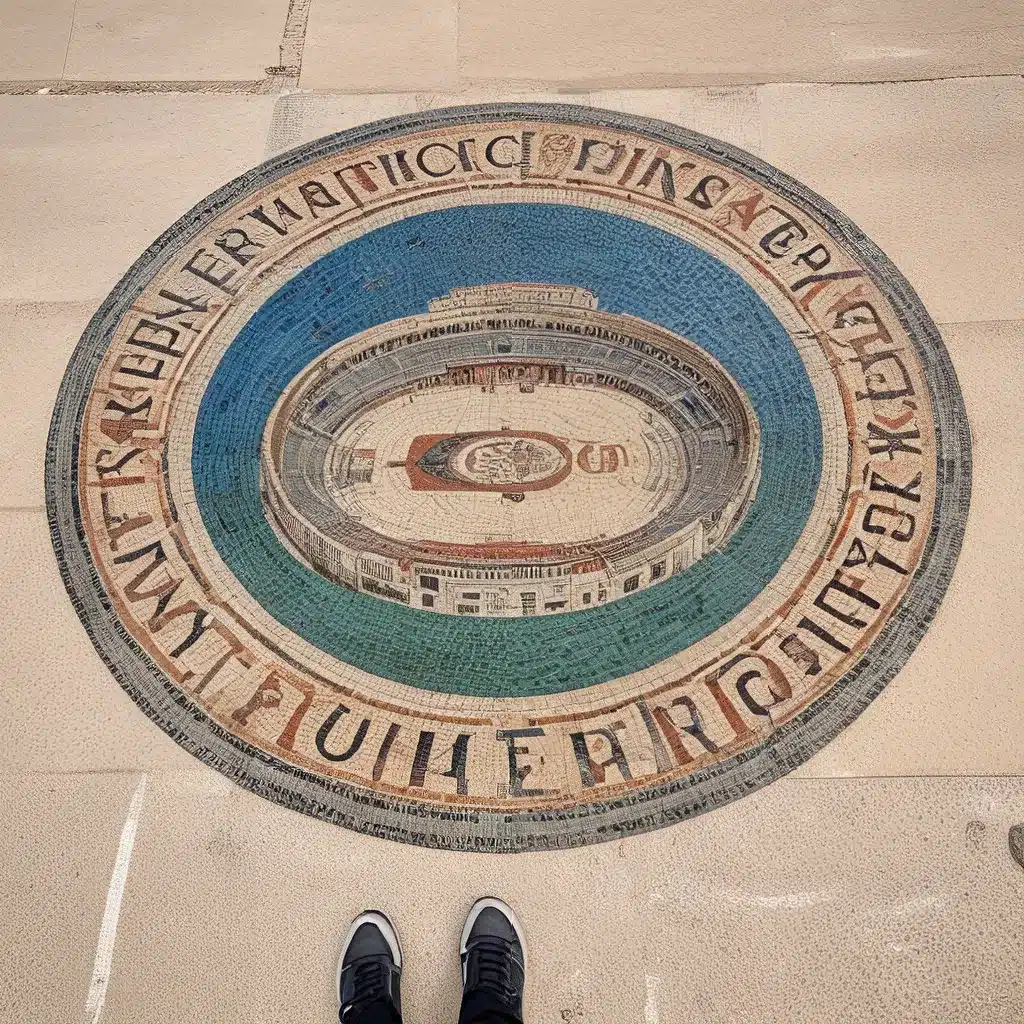
The Iconic Venue of Rome’s Grandeur
Nestled in the heart of the eternal city, the Stadio Olimpico stands as a testament to Rome’s rich heritage and enduring love for the world’s most beloved sport – football. This majestic arena has borne witness to some of the most captivating moments in the annals of the game, from the triumphant victories of Italy’s national team to the fierce rivalries of the city’s legendary clubs, Roma and Lazio.
The Stadio Olimpico’s history can be traced back to the 1920s, when the Foro Mussolini (later renamed the Foro Italico) complex was first conceived as a grand showcase of Fascist architecture and Italy’s athletic prowess. Designed by the renowned architect Enrico Del Debbio, the stadium’s initial incarnation was a modest, yet functional, structure that played host to the 1934 FIFA World Cup.
Over the years, the Stadio Olimpico has undergone a series of expansions and renovations, transforming it into the modern, multi-purpose facility it is today. The stadium’s most significant overhaul came in the lead-up to the 1990 FIFA World Cup, when it was completely rebuilt and expanded to accommodate a capacity of over 82,000 spectators.
Architectural Marvels and Design Highlights
The Stadio Olimpico’s architectural design is a captivating blend of classical grandeur and modern functionality. The stadium’s iconic curved roof, supported by a network of steel trusses, is a defining feature that has become synonymous with the venue’s silhouette. This distinctive design not only enhances the stadium’s aesthetic appeal but also plays a crucial role in regulating the atmosphere within, providing both shade and protection from the elements.
One of the most striking aspects of the Stadio Olimpico’s architecture is the mosaic-clad façade. Adorned with intricate patterns and vibrant colors, this unique feature pays homage to the city’s rich artistic heritage and serves as a visual celebration of Rome’s enduring cultural legacy. The mosaic tiles, which cover the entire exterior of the stadium, were meticulously crafted and installed by a team of skilled artisans, creating a truly breathtaking canvas for this architectural masterpiece.
The stadium’s interior is equally impressive, with a spacious concourse that offers visitors a range of amenities, including concession stands, merchandise shops, and modern restroom facilities. The seating area is divided into several tiers, ensuring that every spectator has an unobstructed view of the action on the pitch below.
A Stage for Footballing Legends
The Stadio Olimpico has long been a stage for some of the greatest footballing talents to showcase their skills. The Italian national team, the Azzurri, have enjoyed immense success within these hallowed grounds, with the stadium serving as the backdrop for numerous triumphs, including the nation’s 1982 and 2006 FIFA World Cup victories.
The city’s two premier clubs, Roma and Lazio, have also written numerous chapters of their storied rivalries at the Stadio Olimpico. The Derby della Capitale, as it is known, is one of the most fiercely contested derbies in world football, with the stadium’s electric atmosphere fueling the intense battles between these two passionate fan bases.
Over the years, the Stadio Olimpico has also played host to numerous European club competitions, including the UEFA Champions League and the UEFA Europa League. The stadium’s grand stage has witnessed the coronation of many European champions, further cementing its status as a revered and iconic venue in the world of football.
Preserving the Stadio Olimpico’s Legacy
As the Stadio Olimpico continues to captivate and inspire football enthusiasts from around the globe, there are ongoing efforts to preserve its rich history and cultural significance. The stadium’s conservation and maintenance are overseen by a dedicated team of professionals who work tirelessly to ensure that the venue remains a testament to Rome’s enduring love for the beautiful game.
Initiatives such as stadium tours and educational programs have also been developed to provide visitors with a deeper understanding of the Stadio Olimpico’s architectural and historical importance. These efforts not only foster a greater appreciation for the venue but also help to safeguard its legacy for future generations.
As the Stadio Olimpico continues to evolve and adapt to the changing needs of modern football, it remains a revered and beloved institution in the hearts of Rome’s passionate fans and the global football community. From its humble beginnings to its current status as a world-class, multi-purpose facility, the Stadio Olimpico stands as a testament to the enduring power of sport to unite, inspire, and captivate.

